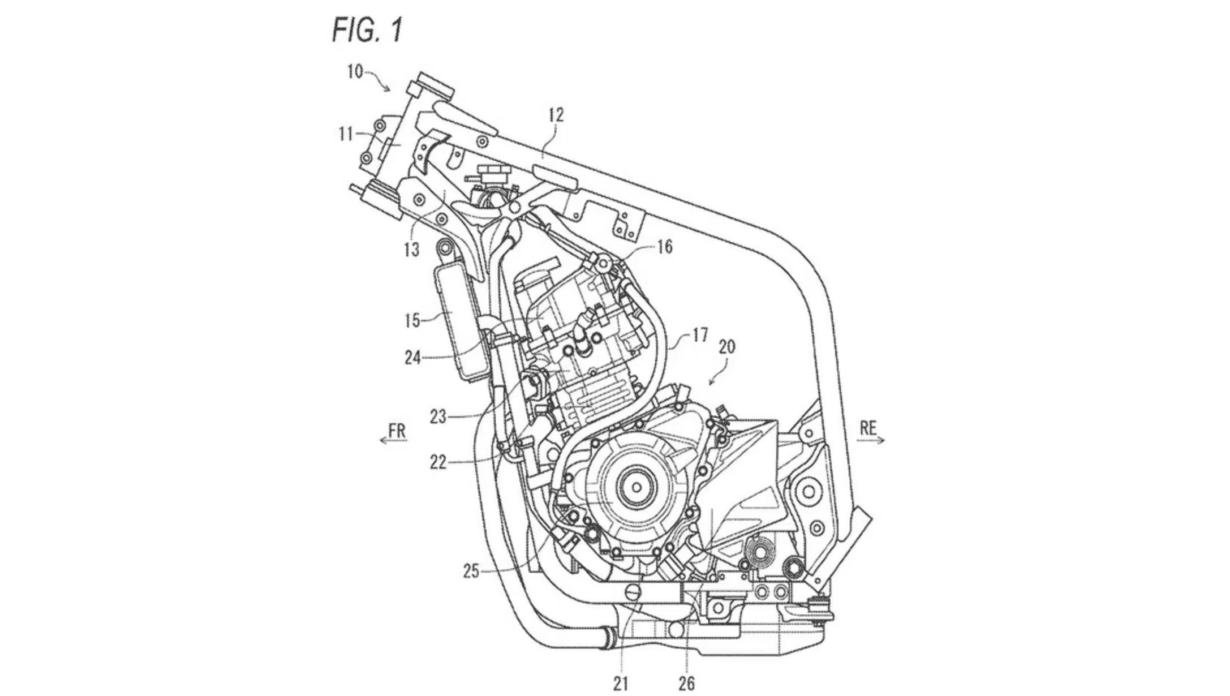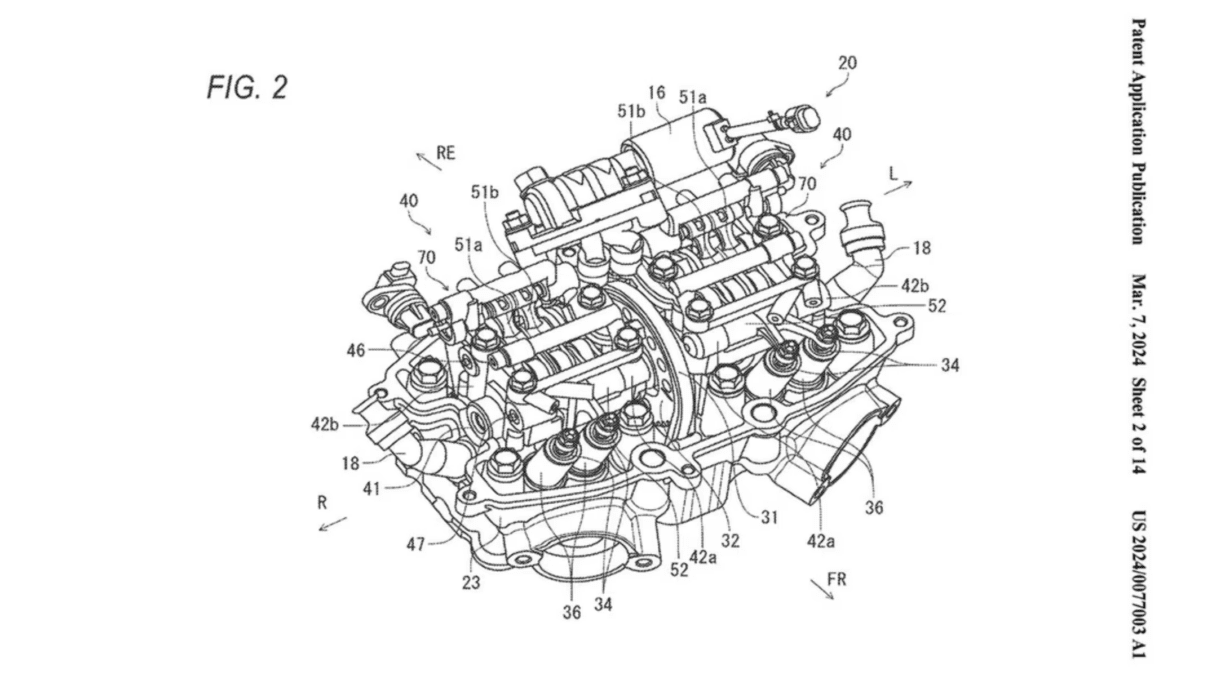Suzuki has applied for a patent for their invention of a straightforward variable valve control, similar to systems used by Yamaha and Piaggio.
Variable valve controls have the potential to enhance combustion engines for several years to come. However, motorcyclists have not had access to this technology frequently, especially when it comes to variable control times or valve lifts. Typically, such features are limited to the highest-end models in order to continuously boost power and performance. Currently, only Yamaha has implemented these advantages in their 125cc single-cylinder engines. Perhaps soon, Suzuki will follow suit.

The simple valve control mechanism has been patented by Suzuki
In March 2024, Suzuki announced their latest innovation: a variable valve control system. Unlike previous attempts, this technology utilizes centrifugal force in the in-line four-cylinder engine of the GSX-R 1000 R. Suzuki has found an effective solution for two-cylinder engines by using oil pressure to control two different intake profiles. This is achieved through an actuator that responds to engine oil pressure, moving a pin to connect a second rocker arm of the intake valves to a second intake cam. The high-cam profile opens the valves wider and for a longer duration, allowing more mixture into the combustion chamber compared to the low-cam profile used for lower speeds.
Increased power at elevated speeds
The application of this principle can enhance performance at high speeds. However, the reverse effect may occur at lower speeds due to reduced intake speeds. It should be noted that this is not a new concept. In fact, as early as 2019, Yamaha has been utilizing a pin to switch cam profiles in their 125cc single-cylinder engine, while in 2023 Piaggio trademarked a similar system for a new Vespa motor.

Suzuki’s engine is powered by a pair of cylinders
The difference between the Yamaha and Piaggio technologies lies in Suzuki’s plan to equip their twin with this system. Essentially, the actuator must have two pins and, according to the drawings, it will be located in a cylinder head with a central timing chain that extends the distance between the rocker arms. It would make more sense for Suzuki to retrofit this engine since they already manufacture it. The GSX 250 R, currently offering 24.5 horsepower with water cooling, is available in the USA. This system may also fit onto Suzuki’s slightly larger 300 twin model, which is being sold in China through a partner. It is unclear if this variable valve control will generate more power or increase torque from the current 23 Nm output. However, a higher torque would be beneficial for fuel efficiency and increased power at medium speeds. At this time, it is unknown if Suzuki will implement this technology and whether it will result in a potential 350 or 400 model being introduced to Europe at a later date.


